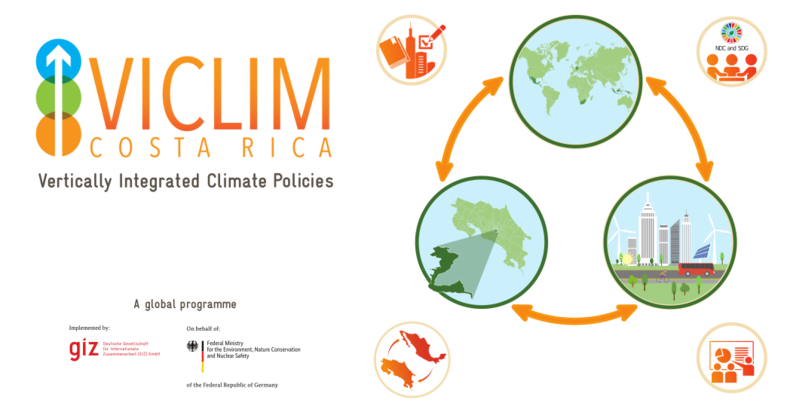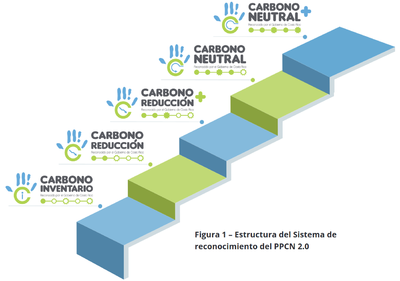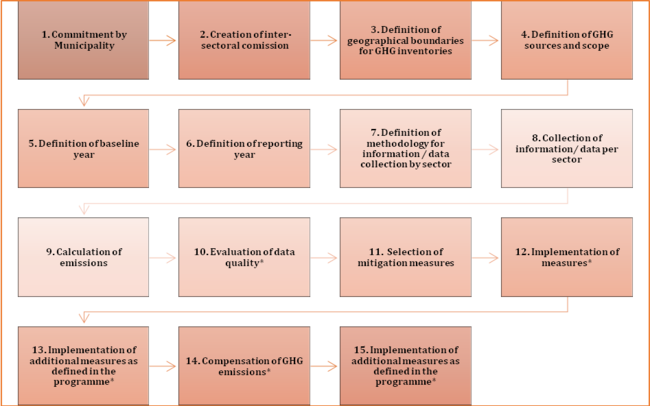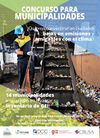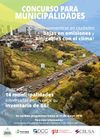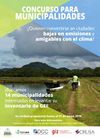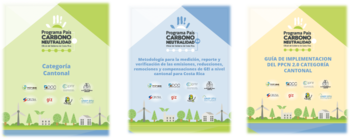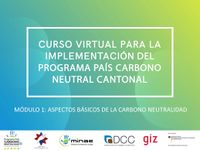Knowledge fuels change - Support energypedia!
For over 10 years, energypedia has been connecting energy experts around the world — helping them share knowledge, learn from each other, and accelerate the global energy transition.
Today, we ask for your support to keep this platform free and accessible to all.
Even a small contribution makes a big difference! If just 10–20% of our 60,000+ monthly visitors donated the equivalent of a cup of coffee — €5 — Energypedia would be fully funded for a whole year.
Is the knowledge you’ve gained through Energypedia this year worth €5 or more?
Your donation keeps the platform running, helps us create new knowledge products, and contributes directly to achieving SDG 7.
Thank you for your support, your donation, big or small, truly matters!
Costa Rica’s Country Program On Carbon Neutrality 2.0: Category Municipalities
In brief
Overview
Costa Rica’s Country Program on Carbon Neutrality 2.0 (Programa País de Carbono Neutralidad 2.0; PPCN 2.0) is a national climate policy instrument that encourages organisations (private and public), businesses and companies as well as local governments to measure, reduce and compensate for their greenhouse gas (GHG) emissions. It uses a ‘system of recognition’ (‘sistema de reconocimiento’) of mitigation efforts by the participants.
The program’s ‘local government category’ targets specifically Costa Rica’s 82 municipalities (‘cantones’) and their districts and communities: Programa País de Carbono Neutralidad: Categoría cantonal (PPCNC) it is called. The PPCNC grants official government symbols (‘símbolos’), i.e. certificates, endorsed by the Costa Rican Ministry of Environment and Energy (Ministerio de Ambiente y Energía, MINAE), to participating municipalities and districts for their endeavours in climate change mitigation.
There are five levels of recognitions with the respective symbol to obtain:
- recognition for elaborating a GHG inventory[1];
- recognition for managing mitigation actions and quantifying GHG emissions reductions;
- recognition for taking additional reduction actions defined by the programme;
- recognition for compensating for emissions that have not been reduced by the actions taken (possible mechanisms of compensation are set in the program); and
- recognition for taking additional compensation actions.
Besides the overall objective of a reduction of GHG emissions, the programme pursues following additional benefits:
- to raise awareness among municipalities and their citizens about climate change and the challenges involved in the process of decarbonising the country's economy;
- to strengthen inter-cantonal and inter-sectoral strategies for climate action;
- to produce primary information on GHG emissions inventories in cantons and districts.
The programme was designed by the Direction of Climate Change (Dirección de Cambio Climático, DCC) of MINAE and made official by Executive Decree No. 41122.
The main process steps
The first step within the process is to have the municipality’s or district’s commitment through an official agreement by the Municipal or District Council and a statement by the Mayor. The second step is the establishment of an inter-sectoral commission within the municipality that executes and monitors all actions around the programme and the mitigation efforts. After that, the foundations for the inventories have to be laid: definition of the geographical boundaries, of sectors, sources and scopes of GHGs, of baseline and report years, and definition of the methodologies used. Costa Rica actually established a unique report that includes all five sectors (energy, transport, waste, industry and agriculture) and different sources of emissions by sector. It reverts to the Global Protocol for Community-Scale Greenhouse Gas Emission Inventories (GPC). The (inventory) report period is 3 years given the complexity to collect all the information and dealing with municipal proceedings.
In order to receive the first ‘Carbon Inventory’ symbol / certificate, the municipality or district now has to collect the information, calculate the emissions and have the quality of the data evaluated (refer to steps # 8 to 10). For the subsequent certificates, municipalities can apply after having implemented measures and additional measures respectively and after having made compensations.
* after step 10, 12, 13, 14 and 15 respectively:
Implementation
In 2017, MINAE kicked off the implementation of the PPCNC. The GIZ supported projects VICLIM, Acción Clima II and MiTransporte[2] joined and worked for the following years with MINAE (1) to organise a piloting in six municipalities (Belén, Desamparados, Golfito, La Unión, San José and District of Monteverde); (2) to use lessons-learnt from the pilots for improvements in the programme and a better systematisation of the processes; and eventually (3) to roll-out the programme.
The pilots
The six pilot municipalities compiled their GHG emission inventories, determined reduction potentials in the sectors of transport, energy consumption, agriculture and solid waste, identified priority areas for interventions and compiled action plans. They were continuously accompanied in the activities. A capacity development process started in December 2017 and continued until July 2018 with training courses, a series of workshops and events for knowledge sharing and peer-to-peer learning among the municipalities. Environment consultancy companies were involved that supported the municipalities in their various tasks. In December 2018, once the inventories were completed and action plans elaborated, all six municipalities were officially certified in the first ‘Category of inventory’.
After having compiled their inventories and had prioritised actions, they set to work on elaborating ‘project profiles’ for selected measures:
- sustainable mobility and public transportation,
- treatment of organic waste from farmers market and from households,
- waste transference centres and waste management in general.
By the end of 2019, all six municipalities had project profiles organizing key information on costs, investment needs and estimation of social and environmental benefits. At least four of them organised to present their project ideas in the course of a competition organized by the foundation CRUSA (Costa Rican USA Foundation for Cooperation) and the IKI project Acción Clima II for funding support in the waste sector. By May 2020, two of them (Desamparados and La Unión) have been selected to receive a financial grant to implement parts of their project.
Roll-out
At the same time, thanks to the big success of the pilot process, CRUSA provided additional funding to the IKI project Acción Clima II. In June 2019, VICLIM co-organised with Acción Clima II a competition among the Costa Rican municipalities for support in participating in the PPCNC. 50 out of 82 municipalities took part in the competition. 14 were selected and started the processes.
By May 2020, all 14 municipalities have finished their inventories and action plans and prepare to submit relevant documents to DCC/MINAE to receive their recognition in the first category of inventory. At the same time, they are in preparation for developing project profiles and feasibility studies for selected mitigation actions.
Institutionalization and sustainability
During the pilot and roll-out processes, the good practices and challenges experienced were analysed and the key program documents[3] were reviewed and improved:
- Base document with an overall explanation and presentation of the program
- Implementation Guide
- Guide on Methodology for Monitoring, Reporting and Verification
- Overview of mitigation actions
- Specific portfolios of projects in sustainable mobility, electric mobility, waste management and refrigeration
- Program Résumé with a new translated version in English
All material can be accessed on DCC’s website.
In addition, information materials (print and video) to advertise the programme were developed:
- https://www.youtube.com/watch?v=IU31kRmK0Z8&feature=emb_logo;
- https://www.youtube.com/watch?v=TG_7T8mHnPg.
And an online-training was developed and piloted in May 2019 with the participation of representatives from IFAM[4], UNGL[5], selected municipalities and consulting firms.
The ‘vertical integration’
Achievements, success factors and lessons learnt
PPCNC in national plans: involve municipalities
The PPCNC shall involve municipalities actively to achieve the goals in the transition towards a low emission development:
- The PPCNC is aligned with the Nationally Determined Contributions (NDC), brought into the international debate by Costa Rica in 2015, submitting a maximum absolute mitigation target of 9,374,000 tCO2eq net emissions in 2030, with a progressive reduction from 2021 on, as well as broad adaptation goals.
- The recent National Development Plan 2019-2022 (Plan Nacional de Desarrollo, PND) states a specific target of municipalities that take part in the PPCNC: a total of 16 municipalities by 2022[6].
- In February 2019, the government published the Decarbonisation Plan Costa Rica 2018-2050, which includes ten axes of action in the areas of transport and mobility, energy, industry and construction, waste management, agriculture and land use, as well as solutions based on nature. Participation of local governments is seen as key to reduce GHG in the different sectors; as well as to implement adaptation policies. The PPCNC is made an official tool to report climate actions developed by municipalities and local actors in the process of the Decarbonisation Plan’s implementation.
From a public policy perspective, it is considered a strategic intervention to integrate municipal and sub-national actors so that they contribute to carbon neutrality in key sectors such as transportation, agriculture and forestry. At the moment, PPCNC rewards front-runners on the path to Costa Rica´s goal of carbon-neutrality. An ultimate goal could be to make the implementation mandatory, considering the high potential for GHG emissions reduction at the city level.
PPCNC in action: support each other
During the GHG inventory compilation process, data from national institutions was crucial: for example, sales of gasoline from the National Refinery (RECOPE), sales of electricity from electricity providers, data on agriculture areas etc. This information was not always available in municipalities or disaggregated as needed by municipalities. Therefore, national level institutions had to respond to local request and in some cases the DCC had to support the municipalities in approaching the institutions, arranging meetings, i.e. enhancing the collaborative efforts.
In this sense, future developments of the National System of Climate Change Data (‘Sistema Nacional de Métricas de Cambio Climático’, SINAMECC) within a broad transparency framework will facilitate climate decisions and actions based on data, informing local and national policy.
However, the DCC, MINAE, is aware of the importance to continue improving different approaches and to complement the ‘system of recognition’ with other supporting instruments. That opinion has been expressed, particularly by the private sector, but also by municipalities.
PPCNC within the municipality
At local level, it is key to involve political as well as technical officials of the municipalities, in order to avoid barriers of communication and challenges of accountability. In this way it is easier to compile the GHG inventories and to continue implementing mitigation actions over time.
Limitations and challenges
- In terms of methodology, the programme still requires further development and adaptations to make national and local inventories on GHG emissions compatible. Besides, there is still a need of indicators for the advances of the PPCNC and towards the goal of carbon neutrality.
- In terms of incentives, other supporting instruments are missing in order to complement the ‘system of recognition’. Unfortunately, the DCC still has limited resources to develop and maintain new instruments.
- Results from the pilots generated useful information to the municipalities to assess their own performance over time and inform local decision-making. However, given methodological differences between the participating municipalities, a comparison among them is not advisable.
References
- ↑ The specifications set in the program are based on the Global Protocol for Community-Scale Greenhouse Gas Emission Inventories (GPC) adapted to the Costa Rican context.
- ↑ All three projects are part of the International Climate Initiative (IKI) by the Federal Ministry for the Environment, Nature Conservation and Nuclear Safety (BMU): https://www.international-climate-initiative.com.
- ↑ The development of the original documents had also been supported by various other partners and projects.
- ↑ Instituto de Fomento y Asesoría Municipal
- ↑ Unión Nacional de Gobiernos Locales
- ↑ Page 180

